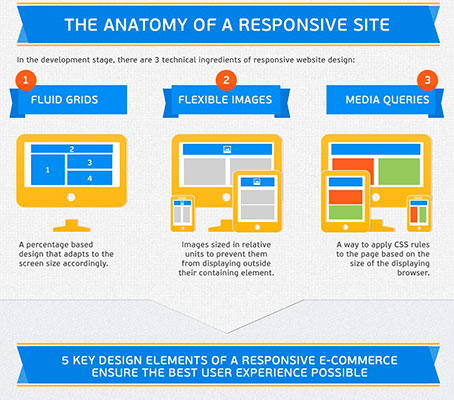Fundamental Aspects Of Web Design: Guidelines For Establishing A User-Centric Website
Fundamental Aspects Of Web Design: Guidelines For Establishing A User-Centric Website
Blog Article
Web Content By-Aguirre Devine
When it pertains to website design, making sure user-friendliness is essential. From responsive style to streamlined navigation, every component plays a vital duty in producing a website that satisfies your target market's demands. However what about the finer details that can make or damage a user's searching experience? Remain tuned as we reveal some often-overlooked pointers that can boost your site's use to the next level, making it truly stand apart in the electronic landscape.
Importance of Responsive Layout
Responsive style is an important facet of contemporary website development. Guaranteeing your website is responsive methods that it can adjust to different display dimensions and tools, giving a smooth experience for customers.
With web design cost boosting use of smart devices and tablets to access the net, having a responsive layout is crucial for reaching a bigger target market. It helps in improving customer experience by making your site very easy to navigate and continue reading any device.
In addition, receptive design can positively impact your online search engine rankings, as online search engine like Google focus on mobile-friendly web sites. By having a responsive design, you're additionally future-proofing your internet site, as new devices with differing screen dimensions remain to arise.
Simplify Navigation Framework
To improve individual experience and help with simple accessibility to info on your web site, streamlining the navigation framework is paramount. When developing your site, focus on creating a clear and instinctive navigation menu that aids site visitors locate what they're seeking rapidly.
Limitation the variety of food selection items to the fundamentals, grouping associated web pages with each other to stay clear of overwhelming customers. Usage detailed tags that plainly suggest the content of each page, making it much easier for users to recognize where each link will take them.
Consider applying dropdown menus for subcategories to avoid cluttering the major navigation bar. In addition, consist of a search bar prominently on the page for customers who choose looking for details details.
Prioritize mobile responsiveness in your navigating style to make sure simple gain access to on all gadgets.
Optimize Page Load Speed
Improving page load rate is essential for retaining visitors on your web site. Slow-loading pages irritate users and can result in high bounce prices. To optimize web page tons speed, begin by maximizing pictures. Compress pictures without endangering quality to reduce their data dimensions.
In addition, allow web browser caching to save regularly accessed sources in your area, quickening tons times for returning visitors. website layout , JavaScript, and HTML data by removing unnecessary personalities, comments, and format, enhancing load speed.
Consider making use of a content shipment network (CDN) to disperse your web site's material throughout several servers worldwide, lowering latency for customers accessing your site from different locations. Last but not least, limit using third-party scripts and plugins, as they can dramatically influence load times.
Final thought
To conclude, by incorporating responsive style, simplifying navigating, and optimizing page load rate, you can produce a straightforward web site that attract a bigger audience and boosts user experience. These essential elements guarantee that visitors can conveniently gain access to and browse your site throughout different devices, causing boosted involvement and contentment. By focusing on https://www.cmswire.com/digital-marketing/the-top-4-digital-marketing-categories/ , you can develop an effective internet site that keeps customers coming back for even more.
